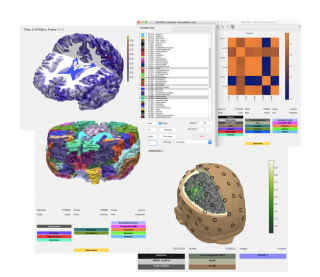
It is recommended to have background studies in basic signal processing, linear algebra and Matlab programming, although it is not necessary to fulfill all these requirements.
Please contact: Associate Professor Sampsa Pursiainen, Faculty of Information Sciences, Tampere University (sampsa.pursiainen@tuni.fi) or Dr. Narayan Subramaniyam, Faculty of Biomedical Sciences and Engineering, Tampere University (narayan.subramaniyam@tuni.fi).
ZI is an open source code package constituting an accessible tool for finite element (FE) based forward and inverse simulations in EEG/MEG and can be used also in other bioelectromagnetical imaging applications targeting the brain. With ZI, one can segment a realistic multilayer geometry and generate a multi-compartment FE mesh, if triangular ASCII surface grids (in .DAT file format or .ASC file format) are available. A suitable surface segmentation can be produced, for example, with the FreeSurfer software suite. A folder containing multiple meshes FreeSurfer’s .ASC format can be built as a single segmentation via the ASCII import utility. A parcellation created with FreeSurfer
can be imported to enable distinguishing different brain regions and, thereby, analysing the connectivity of the brain function over a time series. Multiple compartments can be defined as active, allowing the analysis of the sub-cortical strucures. In each compartment, the orientation of the activity can be either normally constrained or unconstrained.
References:
He, Q., Rezaei, A., & Pursiainen, S. (2018). Zeffiro user interface for electromagnetic brain imaging: a GPU accelerated FEM tool for forward and inverse computations in Matlab. Neuroinformatics, In press, arXiv preprint arXiv:1811.07717.
Miinalainen, T., Rezaei, A., Us, D., Nüßing, A., Engwer, C., Wolters, C. H., & Pursiainen, S. (2019). A realistic, accurate and fast source modeling approach for the EEG forward problem. NeuroImage, 184, 56-67.




